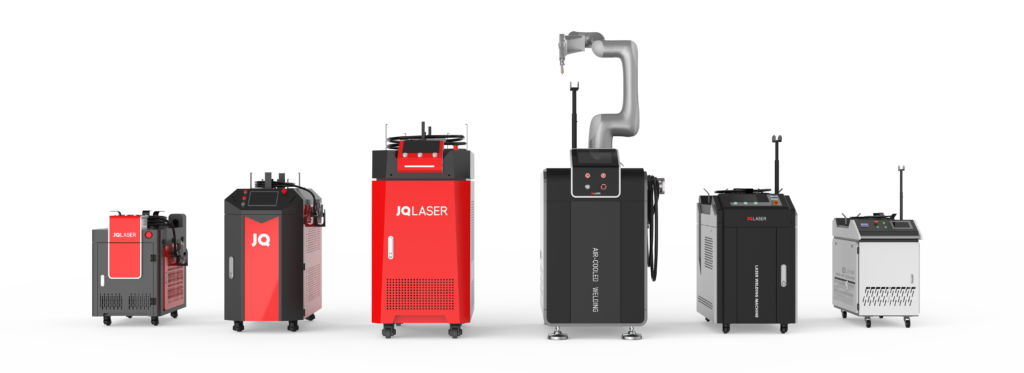Laser welding and TIG (Tungsten Inert Gas) welding are two prominent techniques used in the metalworking industry, each with its own set of advantages and applications. Understanding the differences between these methods can help manufacturers choose the right technique for their specific needs.Laser welding is a high-precision technique that uses a laser beam to join metals. It is known for its speed, accuracy, and ability to weld hard-to-reach areas with minimal distortion. This method is ideal for applications requiring high-quality welds and is commonly used in the automotive, aerospace, and electronics industries. Laser welding provides a concentrated heat source, allowing for narrow, deep welds and high welding rates.On the other hand, TIG welding, also known as Gas Tungsten Arc Welding (GTAW), is a manual welding process that uses a non-consumable tungsten electrode to produce the weld. It is known for its versatility and ability to produce high-quality welds on a wide range of metals, including stainless steel, aluminum, and copper alloys. TIG welding is often used in industries where precision and aesthetics are important, such as in the fabrication of bicycles, aircraft, and food processing equipment.
| Feature | Soldadura láser | TIG Welding |
|---|---|---|
| Precision | High | Moderate |
| Speed | Fast | Slow |
| Heat Input | Low | High |
| Versatility | Limited | High |
| Cost | High | Moderate |
| Distortion | Low | Moderate |
Laser Welding Process and Details

The laser welding process involves focusing a high-intensity laser beam onto the surface of the materials to be joined. This focused beam generates enough heat to melt the materials at the joint, allowing for meshing and solidification of the two surfaces as they cool. The method can be performed using two main types of lasers: Nd:YAG (Neodymium-doped Yttrium Aluminum Garnet) lasers and fiber lasers.
- Nd:YAG Lasers are suitable for thicker materials and provide excellent penetration depth. They can deliver precise energy to specific points, making them ideal for manufacturing frameworks and components in industries that require durability, particularly in automotive structures.
- Fiber Lasers are more versatile and are better for thin materials, due to their efficient beam delivery and compact design. They are widely used in the electronics industry for the production of precision parts.
Promotion of laser welding: getting a free laser welding machine

Benefits of Laser Welding
Laser welding presents numerous advantages over traditional welding methods. Some key benefits include:
- High Precision: The ability to focus laser beams to a very small point allows for extremely precise welds. This is critical in applications where tight tolerances are vital, reducing the possibility of defects.
- Minimal Heat Input: This technique reduces thermal distortion, making it ideal for thin-walled sections and delicate components.
- Automation and Integration Capability: Laser welding can be easily integrated into automated assembly lines, enhancing throughput and efficiency in mass production.
- Flexible Material Compatibility: It can join a variety of metals and some plastics, providing versatility in production environments.
Applications of Laser Welding
Laser welding is widely utilized in a range of applications, including:
- Automotive Industry: Components such as body frames, fuel tanks, and exhaust systems benefit from the precision and strength of laser welds.
- Aerospace Industry: Essential parts like turbine blades and fuselage sections are manufactured using laser welding due to its capability of handling lightweight but high-strength materials.
- Electronics Manufacturing: Laser welding is prevalent in assembling components like connectors and circuit boards, where precision is paramount. For example, companies like Apple use laser welding in the manufacture of their iPhones to ensure secure connections without breaking delicate parts.
- Medical Devices: Surgical instruments and implants are often created through laser welding due to the sterile environment it enables and the high-quality joints it produces.
TIG Welding Process and Details

TIG welding, known as Gas Tungsten Arc Welding (GTAW), utilizes a non-consumable tungsten electrode to produce the weld. The process is characterized by the use of inert gas, typically argon or helium, to protect the weld area from atmospheric gases, which can cause defects in the weld. This protection is essential for maintaining the integrity of the weld, particularly when working with reactive metals such as aluminum or magnesium.
- Process Overview: The welder creates an arc between the tungsten electrode and the workpiece, which generates the heat needed to melt the base material. A filler material can be added to the molten weld pool to help bridge the gap between the edges of the materials being welded.
- Control and Skill: The manual nature of TIG welding means that the welder must have significant skill and experience. This process allows for fine adjustments in heat input and welding speed, enabling high levels of precision.
Advantages of TIG Welding

TIG welding offers several advantages that make it popular in various industries:
- Versatile Material Use: TIG welding can be used on a wide range of metals, including stainless steel, carbon steel, aluminum, and copper alloys. This versatility makes it an essential technique in many fabrication shops.
- Quality of Weld: The process produces clean and high-quality welds with minimal spatter and no need for post-weld cleaning in many cases. This results in beautiful aesthetics, which is crucial for applications where appearance matters, such as in the fabrication of artistic metal sculptures or high-end appliances.
- Control Over Heat Input: The welder has the ability to finely tune the heat to prevent warping and distortion, making TIG welding a preferred method for thin materials.
- No Fume Emissions: Compared to other welding processes, TIG welding generates lower fume emissions, contributing to a healthier work environment.
Challenges of TIG Welding
Despite its advantages, TIG welding has some challenges:
- Longer Welding Times: TIG welding is a slower process compared to laser welding, which can lead to increased production times and costs, particularly in high-volume manufacturing environments.
- Operator Skill Requirements: High levels of skill and experience are required, which can limit the number of individuals able to perform this welding technique effectively.
- Sensitivity to Contamination: The welding area must be kept clean to maintain the quality of the weld, making it necessary to prepare surfaces thoroughly before welding.
Common Uses of TIG Welding
TIG welding is commonly used in industries such as:
- Construction: Used for fabricating components like beams and columns, particularly where high structural integrity is required.
- Automotive: TIG welding is utilized for custom components, exhaust systems, and frames where precise and aesthetic welds are important.
- Aerospace: Used for manufacturing engine components and fuel tanks due to the need for high-strength and lightweight materials.
- Art and Sculpture: Artists and metalworkers utilize TIG welding for creating intricate designs and pieces that require high-quality welds.
Applications and Industries
Laser welding and TIG welding find numerous applications across various industries. Here are more detailed examples illustrating how these techniques are utilized:
Laser Welding Applications:
- Automotive Industry: Laser welding is employed in assembling body structures, fuel tanks, and even electric vehicle components. For instance, Tesla has implemented laser welding techniques in their manufacturing processes to enhance the sustainability and integrity of their electric cars. The precision of laser welding allows for stronger joints, which is crucial for vehicle safety.
- Aerospace Engineering: In aerospace, laser welding is used in producing components like turbine blades and fuselage sections made of lightweight materials such as titanium. When Boeing manufactures their airplanes, they utilize laser welding to ensure both strength and weight efficiency, resulting in better fuel economy and performance for their aircraft.
- Medical Devices: High-quality, sterile welding is mandatory for medical devices. Manufacturers often rely on laser welding for surgical tools and implants where infection prevention is critical. One prominent example is the production of cardiovascular stents, where laser welding ensures strong and reliable joints.
- Electronics: In the electronics sector, precision is key. Laser welding is employed for the assembly of delicate components, such as connectors and circuit boards. Companies like Samsung utilize this technology in creating smartphones, ensuring that their devices remain durable yet lightweight, with minimal risk of damage to internal components.
TIG Welding Applications:
- Construction Industry: TIG welding is widely used in construction for creating structural components like beams and columns, which require superior strength and precision. An example includes the construction of skyscrapers where high-integrity welded joints are essential for safety and durability.
- Custom Automotive Fabrication: Enthusiasts and custom car shops use TIG welding for fabricating unique car components that require precise craftsmanship. Custom motorcycle builders often prefer TIG welding for its control over heat input, which prevents warping in thinner metals used to fabricate gas tanks and frames.
- Food Processing Equipment: TIG welding is critical in fabricating processing equipment due to its hygienic qualities. Food-grade stainless steel pipes and tanks for processing various food products are often welded using TIG methods to ensure compliance with health standards.
- Art Installations and Sculpture: TIG welding enables artists to create intricate metal sculptures. Notably, the works of artist Richard Serra, who is known for large-scale sculptures, often utilize TIG welding to achieve precise joints in his complex installations.
- Aerospace: Similar to laser welding, TIG welding finds its role in aerospace for fabricating engine parts and components where quality and reliability are vital to performance.
Cost Considerations of Laser and TIG Welding
Cost is a crucial factor when comparing laser welding and TIG welding, as both techniques have different initial, operational, and maintenance expenses, influencing the overall project budget.
Laser Welding Costs:
- Equipment Costs: The initial investment for laser welding equipment can range from $100,000 to over $1 million, depending on the type and complexity of the laser system (e.g., Nd:YAG vs. fiber lasers). This high equipment cost is a significant barrier for small manufacturers or those entering the market.
- Operational Costs: Laser welding requires a skilled technician to operate the machinery. Labor costs can vary, but finding qualified personnel may increase labor expenses. Additionally, the cost of electricity can be significant, particularly in high-volume production settings.
- Maintenance: Regular maintenance and calibration of the laser system are required to ensure optimal performance. Maintenance contracts can cost up to 10% of the equipment’s price per year, which should be considered in long-term budgeting.
- Material Costs: Laser welding is suitable for a variety of materials but is mainly used on high-value materials. The cost of materials can be higher compared to those in TIG welding, especially for alloys that require precision welding.
TIG Welding Costs:
- Equipment Costs: The initial equipment cost for TIG welding is considerably lower than for laser welding, typically ranging from $2,000 for portable units to $30,000 for more advanced features. This lower cost makes it accessible for many small businesses and hobbyists alike.
- Consumables and Filler Materials: TIG welding requires the purchase of consumable tungsten electrodes and filler rods. These materials, while modest in cost, do add up over time and should be included in project costs. Filler material can range from $1 to $10 per pound depending on the alloy.
- Labor Costs: Although TIG welding is more labor-intensive, skilled welders are typically compensated at competitive rates. While labor costs may be lower per hour compared to technicians for laser welding, overall costs may rise due to longer time taken to complete welds.
- Training Costs: Since TIG welding requires skilled artisans, training programs and apprenticeships could incur additional expenses, but this investment often pays off in the quality of workmanship.
Overall, while laser welding may present higher initial costs, its speed and efficiency can lead to lower costs over time in large-scale productions. Conversely, TIG welding, with lower startup expenses and accessible technology, remains popular in smaller applications or industries where custom, high-quality work is critical.

